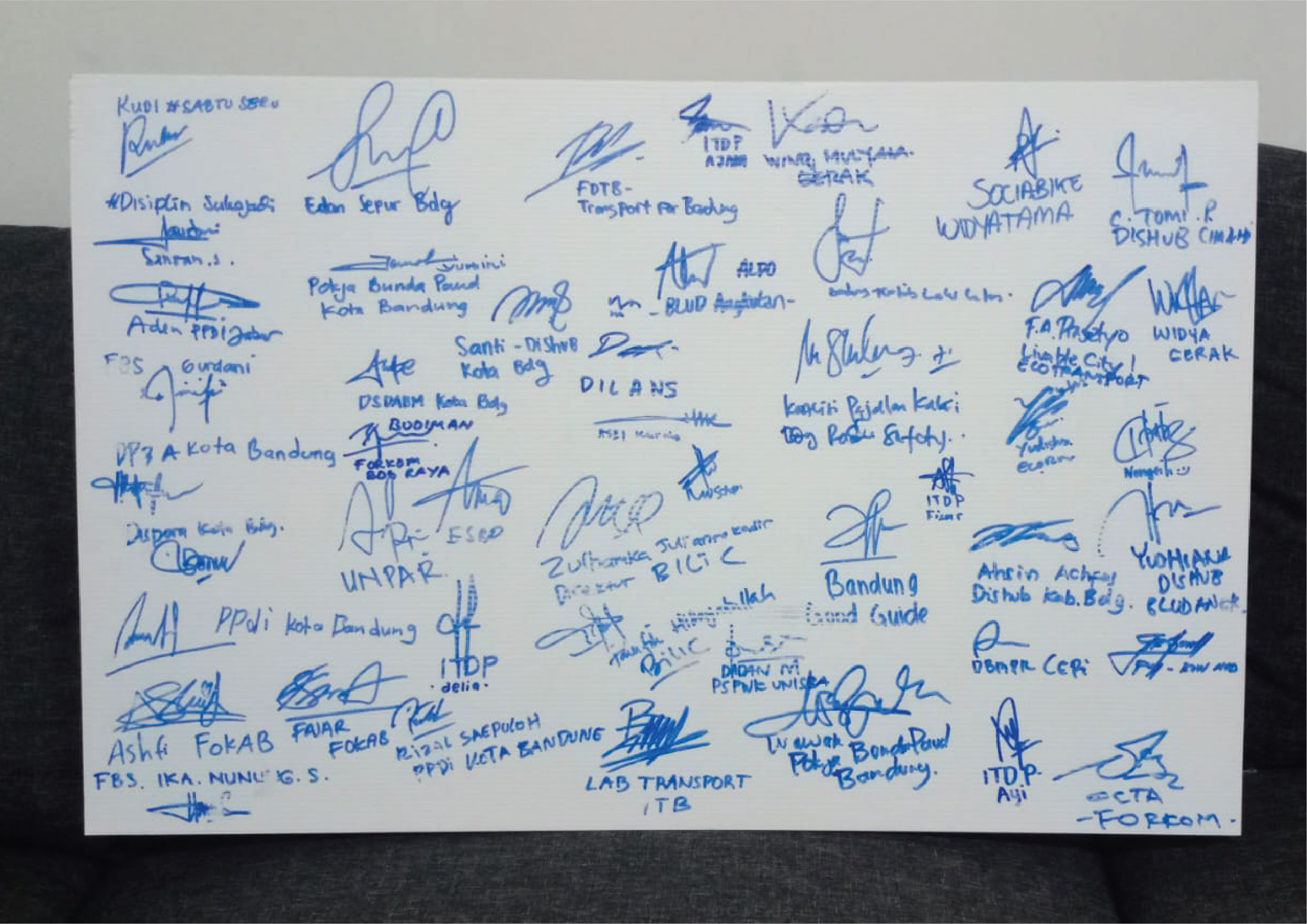October 06, 2024
A Citizen Consensus for an Integrated and Inclusive Public Transport in Bandung: A Message to Future Leaders
By Fani Rachmita, Sr. Communications & Partnership Manager ITDP Indonesia

Over the span of two days, nearly a hundred participants from diverse communities, organizations, academic institutions, and technical city agencies in Bandung gathered to celebrate National Transportation Day. But this gathering was more than just a celebration—during these two days, participants worked together to create a consensus aimed at addressing the mobility needs of city residents. This consensus represents a unified call to make Bandung a city that offers safe and comfortable mobility for everyone, including vulnerable groups.
As Bandung embarks on a transformative journey with the planned Bandung Raya Bus Rapid Transit (BRT) system, the city is taking significant steps toward building a faster, more efficient, and more reliable public transportation network. Yet, behind this grand plan, one crucial challenge remains: making sure that everyone—including pedestrians and cyclists—can easily and safely access this system. The focus is not just on building BRT stations and corridors but also on addressing the “First-Mile and Last-Mile” problem, ensuring smooth access to and from home to the nearest BRT stop.
Hitting the Streets, Identifying the Needs
On the first day of the workshop, participants went out to assess the pedestrian and cycling infrastructure surrounding the planned BRT routes. They walked and cycled through five designated routes near the proposed Bandung Raya BRT stops to evaluate the current state of pedestrian and cyclist infrastructure. During this time, they noted key areas for improvement and existing challenges.
Damaged and discontinuous sidewalks, lack of safe and secure crossings, inadequate signage, especially for vulnerable groups such as people with disabilities, and various violations on pedestrian and cycling paths were among the concerns raised by participants. This firsthand experience reinforces the need for residents to have safe and comfortable mobility, as well as for inclusive accessibility to be established so that the city of Bandung can be enjoyed by everyone.
Building Consensus: Bandung for Everyone
The notes gathered during the assessment served as the foundation for narrowing down the issues. Participants from various agencies, communities, and organizations discussed these issues in small groups over two full days, eventually reaching an agreement encapsulated in the consensus titled “Manifesting a People-Oriented Bandung Through Integrated and Inclusive Public Transportation”. This consensus reflects the hopes of many on how Bandung should develop after the implementation of the Bandung Raya BRT—not only advancing its public transportation infrastructure but also becoming a city that can be accessed safely and comfortably by all its residents. Key points agreed upon in the consensus include:
| 1. | Inclusive Urban Planning
The consensus calls for the government’s commitment to include pedestrian and cycling facilities in urban planning, including strategic plans, local regulations, and the Regional Medium-Term Development Plan (RPJMD), ensuring that motor vehicles are not the sole priority in the city’s development. |
| 2. | Community and Vulnerable Groups Participation
The voices of the community, especially vulnerable groups, must be heard in every stage of planning, development, and evaluation. Through public forums, focus group discussions, and other participatory meetings, they can actively ensure that the infrastructure built truly meets the needs of all. |
| 3. | Cross-Agency Collaboration
Building a safe and comfortable transport system requires collaboration between city agencies. The police, transport, public works, and health agencies must work together to ensure road safety, especially for pedestrians and cyclists. |
| 4. | Integrated Transportation System
Public transportation must be connected to pedestrian and cycling paths. Safe crossings, such as pelican crossings, should be implemented to accommodate all road users, including those with disabilities. |
| 5. | Assistive Technology for Accessibility
An inclusive Bandung should be accessible to everyone, including those with physical limitations. Assistive technologies, such as ramps, elevators, and clear information systems (both physical and digital), are key components of this vision. |
| 6. | Law Enforcement and Education
It is vital to enforce laws against violations on sidewalks and cycling lanes consistently and rigorously. Additionally, continuous public education campaigns through social media and school initiatives should be implemented. Raising awareness is essential to encourage responsible and respectful behavior among road users. |

A Message for Bandung’s Future Leaders
This consensus is not just the outcome of the workshop but also a powerful message for Bandung’s next leaders. With the local elections coming up, this vision serves as a reminder that building an integrated and inclusive public transport system is crucial for a city that truly serves its people.
The citizens of Bandung don’t just want a modern and infrastructure-advanced city; they want a city that cares about the needs of all its residents. Strong collaboration, active public participation, and consistent law enforcement are the hopes for the city’s future. A connected, safe, and inclusive Bandung is within reach if the future leaders listen to these aspirations and commit to making them a reality.
With these concrete steps, Bandung can become a more humane city, providing easy, safe, and comfortable mobility access for everyone—without exception.
Read the document titled “Manifesting a People-Oriented Bandung Through Integrated and Inclusive Public Transportation”













